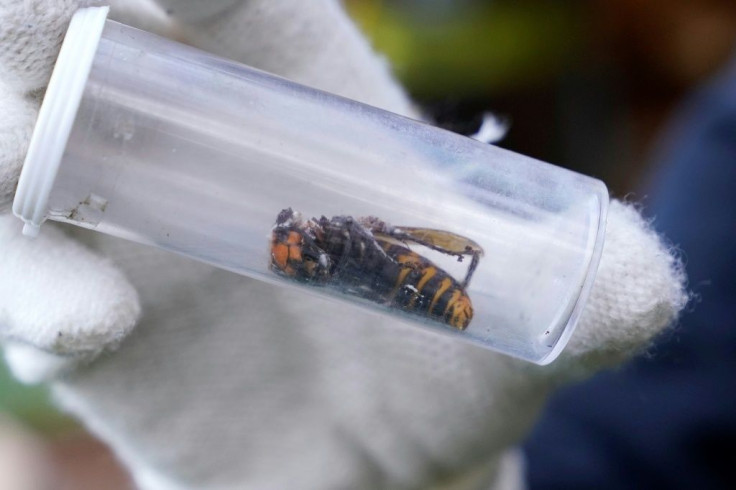First 'Murder Hornet' For 2021 Spotted In Washington State
KEY POINTS
- A resident reported the sighting on June 4
- The specimen has a different color from previous ones
- It's possibly a hornet from a previous season
Authorities have confirmed the presence of a dead Asian giant hornet in Snohomish County, Washington, marking the first detection of the so-called "murder hornet" in the U.S. in 2021.
A resident reported the sighting to authorities on June 4, the Washington Department of Agriculture (WSDA) said in a news release Wednesday. The specimen was collected by the WSDA on June 8, and entomologists from the WSDA and U.S. Department of Agriculture Animal and Plant Health Inspection Service (USDA APHIS) confirmed it to be an Asian giant hornet days later on June 11.
This marks the first confirmed Asian giant hornet detection in the country for 2021, AP News reported. It's the first one from Snohomish County as well.
The specimen has a different color from previous ones, suggesting that it is "unrelated" to the hornets discovered in Canada and Whatcom County, the agency said.
In a tweet, WSDA shared how the Asian giant hornet found in Snohomish County differs from those found in Whatcom County.
The #AsianGiantHornet detected in Snohomish County had a different color form than those found in Whatcom County. See how they compare in the image below. Learn more at https://t.co/p4bsqukyX1 pic.twitter.com/Mgfh7RVxTo
— Washington State Department of Agriculture (@WSDAgov) June 16, 2021
Experts believe that the specimen may have been an old one from a previous season because it's male and it is "exceptionally dry." Typically, males don't emerge "until at least July." For instance, even when they emerged in July last year, it was still "earlier than expected," Dr. Osama El-Lissy, deputy administrator for the USDA's Plant Protection and Quarantine Program, noted in the news release.
"However, we will work with WSDA to survey the area to verify whether a population exists in Snohomish County," El-Lissy added.
So far, the Asian giant hornet is not considered to be established in the U.S. But at five times the size of a honey bee, even one hornet can kill "as many as 40" honey bees in a minute. As such, their presence can lead to the "complete loss" of honey bee colonies, which we rely on to pollinate important crops.
"This new report continues to underscore how important public reporting is for all suspected invasive species, but especially Asian giant hornet," Sven Spichiger, managing entomologist at WSDA, said. "None of this would have happened without an alert resident taking the time to snap a photo and submit a report."
In 2020, all of the confirmed sightings in Canada and half of the ones from Washington were reports from the public. That said, those who believe they've spotted an Asian giant hornet should be very careful. Although they are not typically aggressive toward humans, they can sting people trying to handle them. And since they're much bigger than other stinging insects, their stingers are longer and can give larger doses of venom.
"Use extreme caution near Asian giant hornets," the WSDA said. "If you encounter an Asian giant hornet, slowly and calmly leave the area. Swatting may cause it to sting."
Those who would like to report an Asian giant hornet sighting may do so via the WDSA's Hornet Watch Report Form, which also provides photos of other native species that may look very similar to the Asian giant hornet. It's best to have a photo of the specimen for verification.

© Copyright IBTimes 2025. All rights reserved.






















